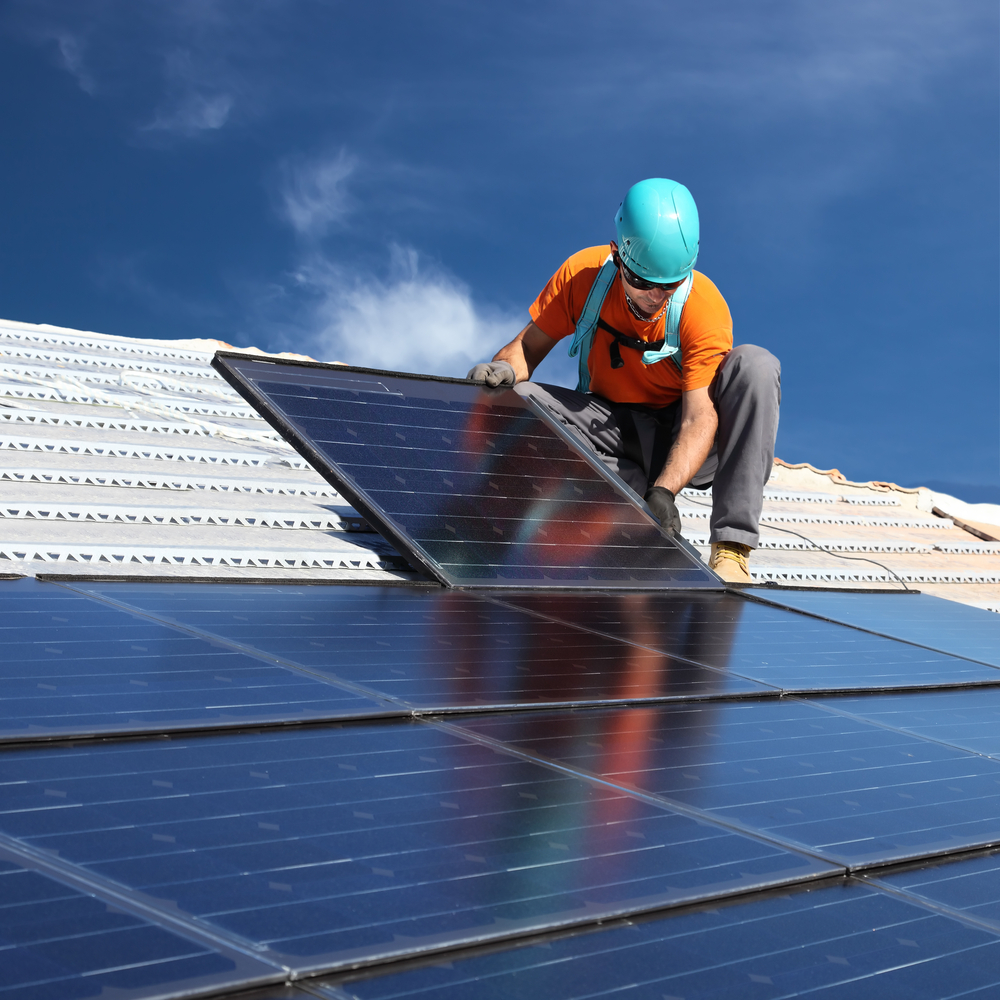Want to know the real reason that rooftop solar panels haven’t spread across the United States yet? Slap a few panels on your roof some night and wait for the local code enforcer to notice them. Then count the citations as they roll in.
According to the U.S. Department of Energy, we’ve got the technology to power our lights with solar, but the red tape gets in the way. Regulatory hoops are holding up solar progress, says the agency (which is somewhat famous for its regulatory hoops), and making rooftop solar twice as expensive as it should be.
Now, to get us over the hump on solar power, DOE is offering a total of $10 million in prize money to the first teams of Americans that can figure out how to cut through the red tape and make solar installation cheaper on a sustainable basis. It might be the first time the government has offered such a fabulous reward for finding a way to get around the government.
With the Sunshot Prize, the feds are betting that good ol’ American ingenuity, along with social skills and public disdain for excessive paperwork, will help us catch up with countries like Germany, where putting up solar panels costs roughly half of what it does in the U.S. The prize money will go to the first three teams that can hook up 6,000 rooftop solar customers while keeping “soft costs” – that is, permitting, labor, inspections, etc. — at an average of $1 or less per watt, roughly a third of current soft costs.
It will be no small feat. In the U.S., there is a wall of tedium involved in getting solar rooftop projects underway. A lot of it is legwork — commuting to the various agencies, wandering the hallways from office to office submitting plans and applications, and unraveling conflicting permit requirements between towns, counties, and states where customers happen to reside.
To make matters worse, a lot of permit officials don’t understand how solar works — they think it’s tricky or untested technology. As a result, more than a third of solar installers say they avoid selling in certain areas because of permitting requirements, according to a report from the National Solar Permitting Database. And then there are the permit fees, which vary wildly between jurisdictions.
“It’s not that solar panels are less expensive in Germany, but the total difference is soft costs,” says Kareem Dabbagh, a design and field operations manager for Sunrun Inc., one of the leading residential solar installers in the U.S. Dabbagh says a solar rooftop installation in the U.S. averages around $5.25 per watt, with a whopping 60 percent of that going to soft costs, while only 40 percent covers equipment.
Dabbagh says there’s little reason rooftop photovoltaic systems should be treated a whole lot differently from a dishwasher or stove. But the whole permitting rigmarole gives solar panels an aura of an exotic technology — rather unlike the reputation it has on the other side of the pond. “In Germany people understand solar, they know they can go to the bank for financing, their neighbors have it, and they want it.”
Of course, Germany, Taiwan, and other countries also promote and even subsidize their residential rooftop photovoltaic installation industries. Many have instituted feed-in tariffs that guarantee that utilities will buy back excess power at an attractive price.
Introducing the SunShot Prize, a.k.a. Race to the Rooftops, via webinar, Adam Cohen, a DOE SunShot fellowship winner with a PhD in physics, conceded that solar might not be for everyone. He said of the country’s 100 million households, 75 percent would have a difficult time doing rooftop photovoltaic systems because of their status as condos or rentals, or because of rough terrain or shading.
But there’s no need to take an axe to your neighbors’ towering oaks or move to Death Valley. If even a fraction of U.S. homeowners adopt solar, the impact would be huge. “If one in 10 adopts solar, and if rooftop solar system prices average $10,000 — that’s $25 billion,” Cohen said — and that’s not counting the value of electricity they supply.
What will contestants have to do to bring their costs of installation down to below $1 per watt? Find cheaper installation methods? Work cooperatively with local code enforcers? Come up with marketing schemes that allow them to sell a pile of installations all at once? All of the above? Or will it be something no one else has ever thought of before?
That could be up to you. If you’ve got ideas, grab your laptop and tool belt, and get started. Just please leave your neighbor’s trees intact.




